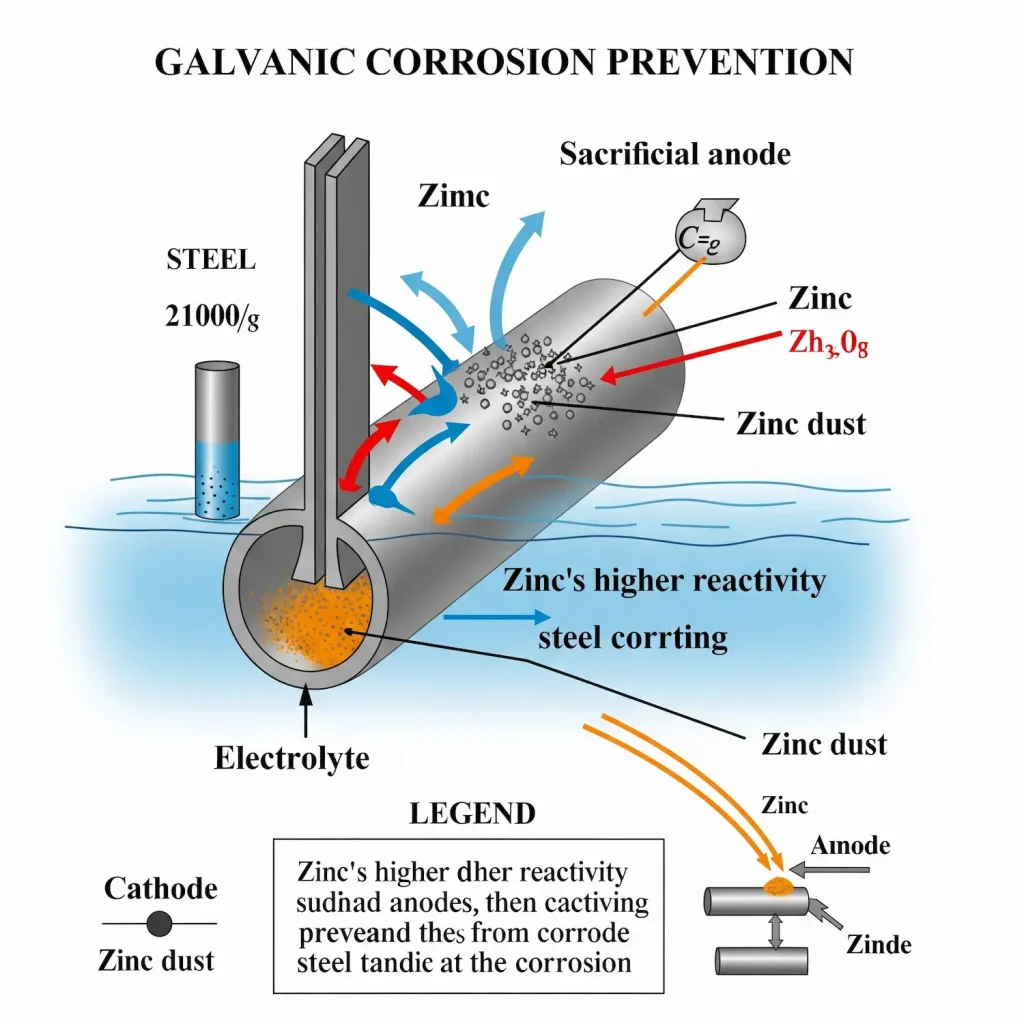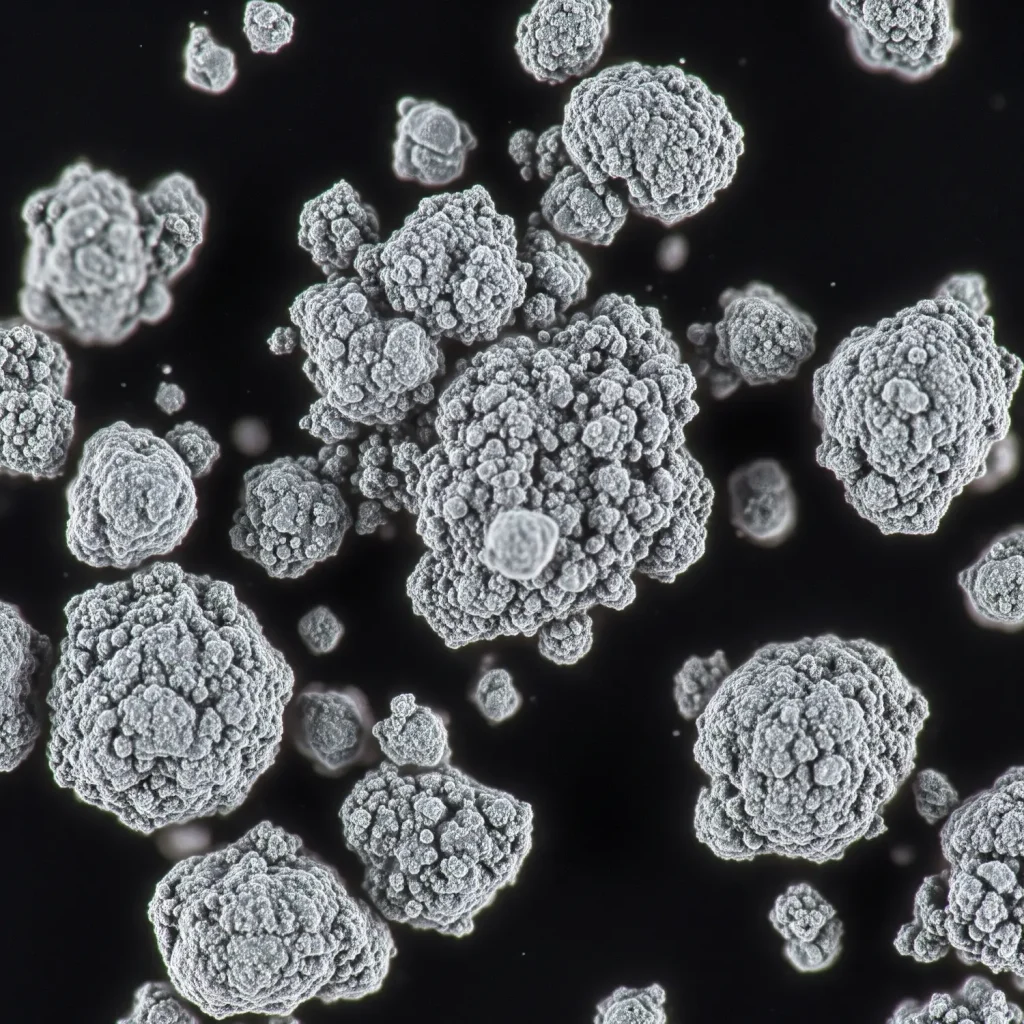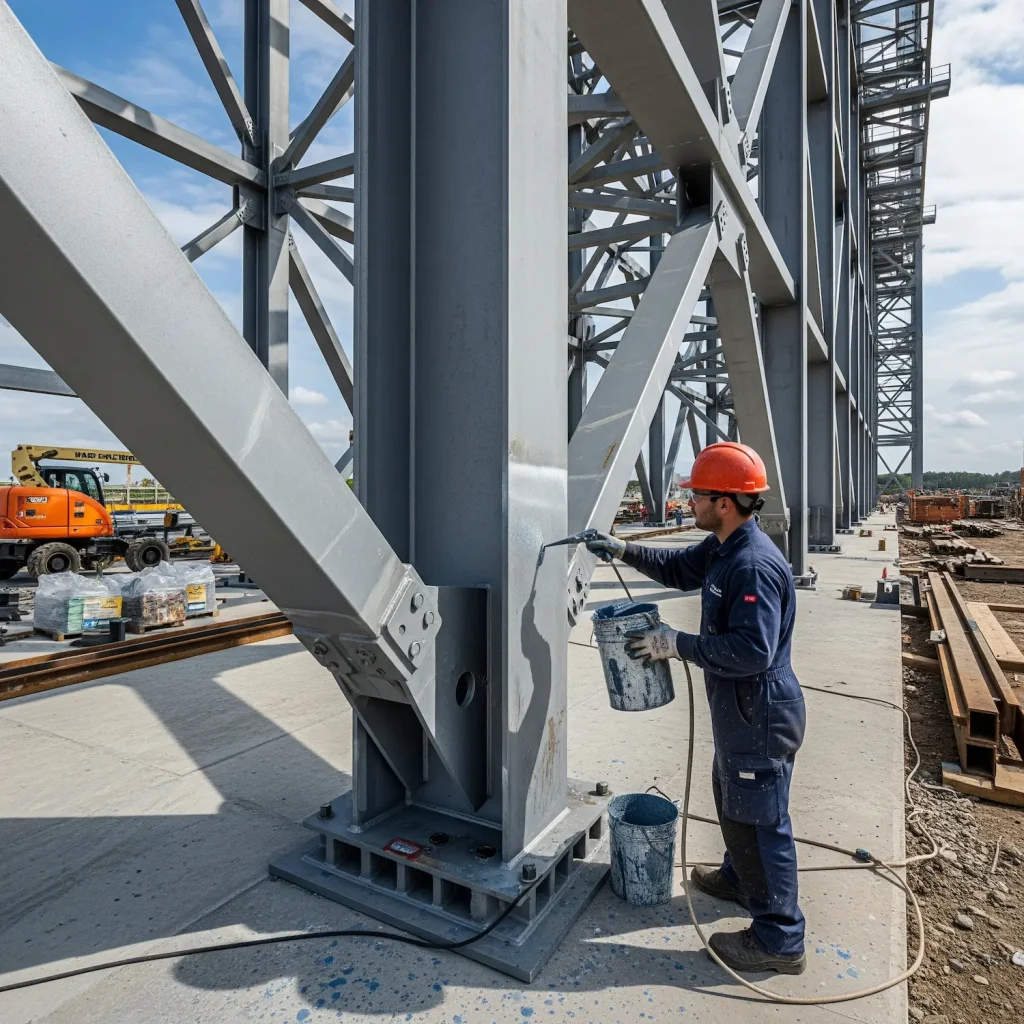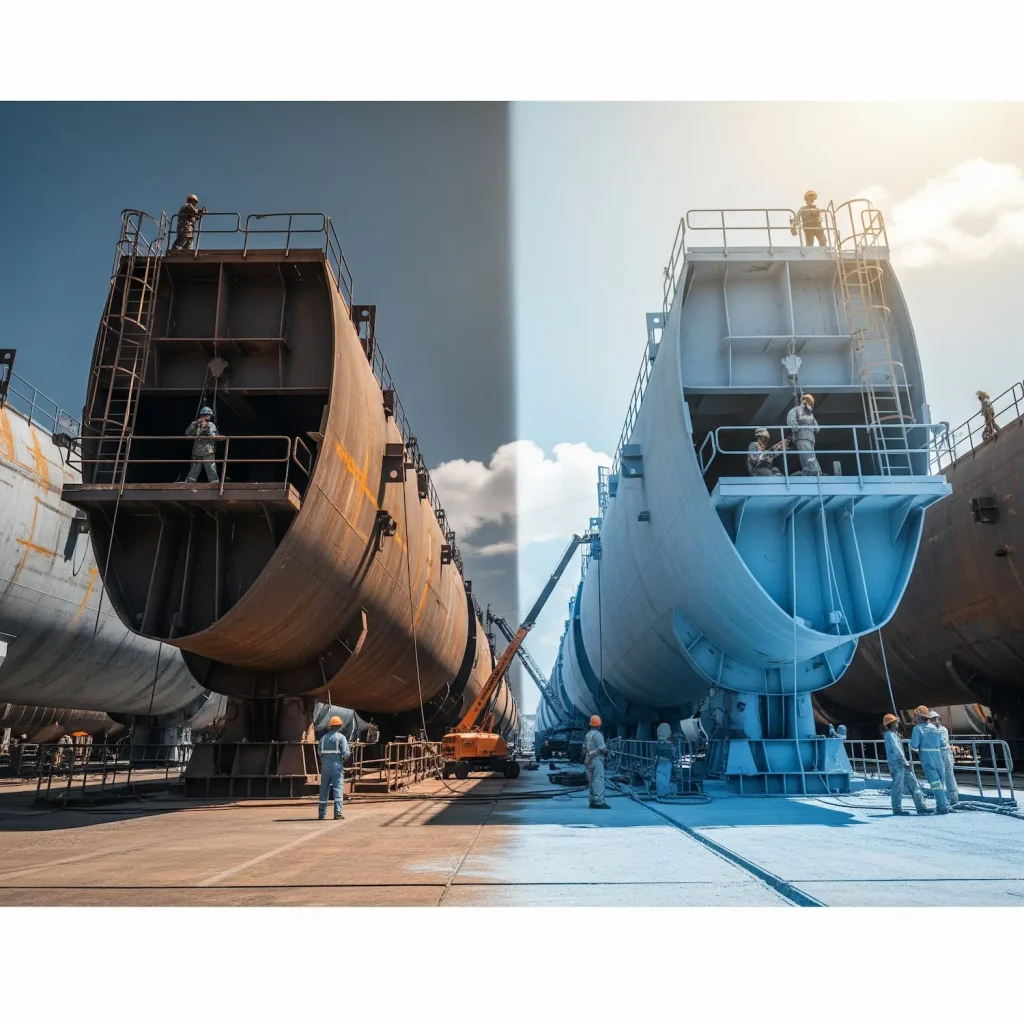We’re all in a constant fight against things falling apart, and when it comes to metals, corrosion is a huge enemy. It costs industries billions every year in fixes, replacements, and lost work time. Think about bridges, pipelines, ships, or car parts – they’re always exposed to the environment, which slowly eats away at them. Finding a strong, long-lasting way to fight this hidden problem has led engineers and scientists to an amazing answer: zinc dust. It’s not just a simple metal powder; it acts like an invisible shield, offering top-notch protection that makes things last longer and keeps operations running smoothly.
This detailed guide will dig into the science and real-world uses of zinc dust as the best way to stop corrosion. We’ll look at its special electrical properties, the different forms it comes in, and the clear benefits it brings across many industrial settings. By understanding how powerful zinc dust is, you can make smart choices to protect your investments and strengthen your infrastructure against the constant threat of corrosion.
The Science Behind the Shield: How Zinc Dust Prevents Corrosion
At its core, corrosion is an electrical process where metals react with their surroundings to form more stable compounds, usually oxides or hydroxides. Rusting, which is when iron corrodes, is probably the most common example we see. To truly protect against corrosion, we need something that actively stops this electrical reaction. And that’s exactly where zinc dust shines.
Its unique properties allow it to do three crucial things: galvanic protection, barrier protection, and even self-healing.Zinc’s place in the electrochemical series is key to how it protects. Because zinc is more negative electrically than steel (iron), it will corrode first when it’s in contact with steel. It essentially “sacrifices” itself to protect the iron metal underneath. This cathodic protection stops the steel from oxidizing, making zinc dust a vital part of many protective coatings.
Galvanic Protection: Zinc’s Sacrificial Role
The main reason zinc dust works so well is its ability to provide galvanic protection. When zinc dust is mixed into a coating and put on a steel surface, it forms an electrical cell if there’s an electrolyte around (like moisture or salty spray). Since zinc is more reactive than iron, it becomes the “anode” in this electrical reaction.

This means it oxidizes and corrodes first, which keeps the steel surface (the “cathode”) safe. This self-sacrificing action is a very effective way to stop rust, even if the coating gets scratched or damaged.This sacrificial process means that even small flaws in the coating or later damage during use won’t harm the metal underneath. The zinc keeps protecting the steel as long as there’s an electrical connection and enough zinc left to act as the sacrificial anode, providing a strong and reliable defense that simple barrier coatings just can’t match.
Barrier Protection: The Physical Defense Layer
Beyond its sacrificial qualities, zinc dust also plays a big part in barrier protection within a coating system. When it’s used in zinc-rich primers, the high amount of zinc particles creates a thick, impenetrable film. This physically separates the steel from things that cause corrosion in the environment, like oxygen, moisture, and chemical pollutants. This physical barrier acts as the first line of defense, slowing down or completely stopping corrosion from starting.
The effectiveness of this barrier is boosted by the metallic nature of the zinc dust itself. Unlike organic pigments, metallic zinc particles pack together very tightly, creating a difficult path for corrosive elements to follow. Plus, as the zinc slowly corrodes over time, its by-products (like zinc oxides and hydroxides) can fill tiny holes and cracks in the coating, making the barrier even stronger and extending how long the system protects.
Understanding Zinc Dust: Properties and Grades
Zinc dust isn’t just one single material; how well it works in corrosion protection really depends on its specific qualities, mainly its particle size, shape, and purity. Different ways of making it, like atomization or condensation, create distinct characteristics that make certain grades of zinc dust better for particular coating recipes and final uses.
For engineers and people who create these formulas, understanding these fine details is crucial for getting the best performance.Typically, zinc dust used for anti-corrosion coatings has particle sizes ranging from 2 to 10 micrometers. Finer particles offer more surface area and can help create a smoother film, while coarser particles might affect film formation but can sometimes be more cost-effective. High purity is also extremely important, because impurities can negatively impact how well the coating works electrically and its overall ability to protect.
Types of Zinc-Rich Coatings: Where Zinc Dust Shines
The sheer versatility of zinc dust is best shown in the various types of zinc-rich coatings it makes possible. Each one is designed for specific performance needs and environmental exposures. These coatings are mainly grouped by the type of binder they use, which dictates how they’re applied, how they cure, and their overall durability. The choice of binder system is just as vital as the zinc dust itself for achieving long-lasting corrosion resistance.
Two main types dominate the market: inorganic zinc-rich primers and organic zinc-rich primers. Both use zinc dust as the main active ingredient for cathodic protection, but they differ significantly in their chemical makeup, application properties, and the environments they’re best suited for. This offers a wide range of solutions for diverse industrial needs.

Inorganic Zinc-Rich Primers: The Gold Standard
Inorganic zinc-rich primers, usually based on silicates (like ethyl silicate or sodium silicate), are often seen as the top choice for heavy-duty industrial corrosion protection. These coatings harden into an extremely tough, abrasion-resistant film with excellent grip on steel and superior galvanic protection. Their inorganic nature provides outstanding heat and chemical resistance, making them perfect for harsh environments.
The high amount of zinc (often 80-90% by weight in the dry film) ensures strong cathodic protection. Once cured, the silicate binder forms an inert, porous matrix that allows electrical contact between the zinc particles and the steel, enabling the galvanic action. Their long-term durability and proven history make them a preferred choice for critical structures like bridges, marine installations, and chemical plants.
Organic Zinc-Rich Primers: Flexibility and Versatility
On the other hand, organic zinc-rich primers use organic binders such as epoxies, polyurethanes, or urethanes. While they might offer slightly less cathodic protection than their inorganic counterparts due to lower zinc content (typically 65-80% by weight in the dry film), they make up for it with greater flexibility, better recoating ability, and wider application windows.
These coatings are often used when excellent adhesion to various surfaces, easy application, and good compatibility with topcoats are needed.Their organic binder systems create a more flexible film, which is beneficial in environments subject to movement or impact. They also tend to be more forgiving when it comes to surface preparation and environmental conditions during application. This adaptability makes them a popular choice for a wide array of industries, including automotive, general manufacturing, and maintenance painting.
Key Benefits of Zinc Dust in Corrosion Protection
The widespread use of zinc dust in anti-corrosion coatings isn’t accidental; it comes from a mix of significant advantages that directly tackle the problems of metal preservation. These benefits go beyond simply stopping rust, covering better durability, cost-effectiveness, and environmental considerations that all lead to a superior protective system.
Recognizing these core benefits helps people understand the long-term value that zinc dust provides.The protective strength of zinc dust coatings means longer asset life, lower maintenance costs, and improved safety, making it a very appealing solution for any industry that relies on metal structures. Its ability to provide both active and passive protection offers a multi-layered defense against the many factors that cause corrosion.
Here are some of the most compelling advantages:
- Exceptional Durability and Extended Service Life: Zinc-rich coatings significantly make steel structures last longer by actively stopping corrosion. This means less need for frequent repainting or replacing parts.
- Active Sacrificial Protection: Even if the coating gets damaged physically, the zinc continues to corrode first, protecting the steel underneath from rust.
- Excellent Adhesion to Steel: Both inorganic and organic zinc-rich primers stick very well to properly prepared steel surfaces, ensuring a long-lasting bond.
- Superior Abrasion Resistance: Especially inorganic zinc primers, they form very tough films that resist wear and tear, which is crucial in harsh industrial settings.
- Versatility in Application: Zinc dust can be made into various coating systems, allowing it to adapt to different environmental conditions and application methods.
- Cost-Effectiveness in the Long Run: While the initial cost to apply might be higher than regular paints, the longer service life and reduced maintenance expenses result in big savings over time.
- Reduced Maintenance Costs: Fewer corrosion-related repairs and less frequent repainting schedules lead to substantial savings on labor, materials, and downtime.
- Enhanced Safety: Protecting the structure’s integrity directly contributes to safer operations and lowers the risk of huge failures due to material breaking down.
These benefits together make zinc dust an essential material for any full plan to stop corrosion.
Applications Across Industries: Where Zinc Dust Makes an Impact
The constant threat of corrosion means that the protective power of zinc dust is in high demand across an incredibly wide range of industries. From the massive structures in civil engineering to the tiny parts in manufacturing, zinc dust plays a quiet yet vital role in keeping assets safe and operations running smoothly. Its ability to work well in diverse environments makes it a universal solution for various metal surfaces.
Understanding the specific uses within these industries shows just how adaptable and indispensable zinc dust is as a fundamental part of their anti-corrosion plans. Each sector uses zinc’s unique properties to deal with its particular challenges and ensure its critical infrastructure lasts a long time.
Some key industries that benefit from zinc dust applications include:
- Marine & Offshore: Ships, oil rigs, port facilities, and underwater structures are constantly exposed to saltwater and extreme conditions, making zinc-rich coatings vital for preventing quick corrosion.
- Oil & Gas: Pipelines, storage tanks, refineries, and drilling equipment need strong protection against corrosive hydrocarbons and atmospheric elements.
- Infrastructure: Bridges, highway guardrails, power transmission towers, and railway parts rely on zinc dust coatings for long-term durability in outdoor environments.
- Automotive: Chassis, exhaust systems, and underbody parts use zinc-rich primers for corrosion resistance, extending vehicle life.
- Manufacturing & General Industry: Structural steel in factories, machinery, and equipment often incorporates zinc coatings to withstand harsh industrial atmospheres.
- Mining: Equipment exposed to abrasive and corrosive elements benefits from the protective properties of zinc dust.
- Chemical Processing: Tanks, pipes, and and containers holding corrosive chemicals require specialized zinc-rich coatings for enhanced resistance.
This wide range of uses highlights the crucial role zinc dust plays in keeping global industrial assets safe from the damage of corrosion.

Sourcing and Quality: Partnering for Reliable Zinc Dust Supply
For industries relying on zinc dust for vital corrosion protection, the quality and steady supply of this raw material are absolutely crucial. Getting high-purity zinc dust from a trusted supplier isn’t just a buying decision; it’s a strategic partnership that directly affects how well and how long the final product performs. Things like particle size distribution, chemical purity, and how well the supplier can handle logistics are all very important.
As a leading importer and exporter of zinc dust, we understand these critical needs. We’re committed to providing materials that meet the strictest industry standards. Our experience in global supply chains ensures you get the exact specifications you need for your products, delivered reliably and efficiently. This allows you to maintain the highest quality in your protective coatings.
Conclusion: Embracing Zinc Dust for Unrivalled Protection
The relentless problem of corrosion demands a solution that is both scientifically sound and practically effective. Zinc dust, with its remarkable electrical properties and versatile use in various coating systems, clearly stands out as the ultimate solution for top-tier corrosion protection. Its ability to provide both galvanic and barrier defense, combined with its long-term cost benefits and wide industrial application, makes it an essential material for keeping assets safe and operations running without a hitch.
By smartly adding high-quality zinc dust to your protective coating plans, you’re not just stopping rust; you’re investing in the long life, safety, and economic strength of your crucial infrastructure. Partnering with a reliable supplier like us ensures you have access to the best zinc dust, letting you build strong, resilient defenses against the hidden forces of corrosion and securing your assets for years to come.



